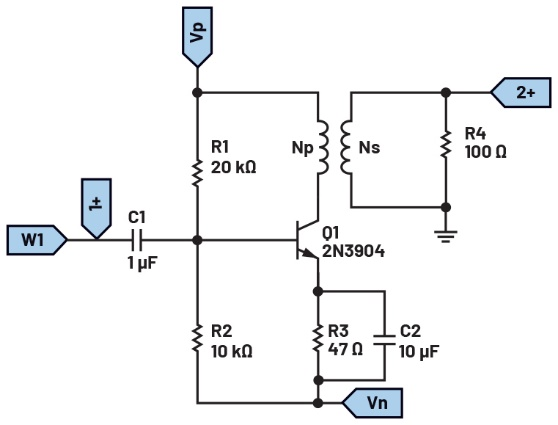Designing ZigBee applications to be used with energy harvesting sources presents a number of challenges. One of the most difficult harvesters to use is the self-powered switch due to the small amount of energy generated. Utilizing the ultra-low-power Jennic JN5148 microcontroller, it is possible to design a working application powered from the SPS, which can achieve three ZigBee based transmissions using only 100 uJ of energy.

Energy harvesting as a method of power generation for wireless sensors introduces the potential for a sustainable wireless sensor networking solution, enabling key concerns with ongoing maintenance costs and the environmental issue of battery disposal to be addressed.
Use of the high-performance 32-bit RISC CPU core inside the JN5148 for fast processing, combined with the ultra-low-power consumption of the device in sleep and when active, enables designers to use energy levels that might ordinarily be considered as insignificant to generate sufficient power to energize the ultra-low-power Jennic microcontrollers.
Jennic recently partnered with a number of energy harvesting providers and is focused on utilizing sustainable power sources for standards based wireless sensor networks.
Self-powered switch
One energy harvesting source of particular interest is the Self-Powered Switch (SPS), which may typically use either electro-mechanical or piezoelectric transducers to generate a small voltage pulse from the physical action of pressing the switch.
This class of harvester will find use in applications such as door activated contacts, floor mounted pressure switches, and light switches. Wireless switches do not need batteries, making them attractive to consumers due to the environmental connotations, and are low maintenance. The lack of wires makes them easy and inexpensive to install on any surface.
The energy pulse produced by the SPS is usually well defined and repeatable, however, the amount of energy generated may be very small (as low as 150 uJ in some cases) and since there may be a long time between successive actuations of the switch, there will generally be no stored energy available between presses. For these reasons, the SPS is one of the most difficult energy harvesting sources to utilize and achieving a working solution, even with the JN5148, presents many design challenges.
Profile of a typical ZigBee transmission
Figure 1 shows a typical ZigBee based transmission using the JN5148. The device wakes up and loads the program into the RAM from external flash, then it initializes the MAC software layer. The program then runs some calibration routines to optimize the radio performance. These are typically performed each time the chip wakes up in case the ambient temperature has changed significantly while the chip was asleep. The program takes some measurements using the ADC and digital I/O, processes the data and generates a payload of data to be transmitted, then the device performs a CCA (Clear Channel Assessment) to check that the channel is not busy so as to improve the chance of reception. Next it transmits the payload as a ZigBee packet and then it goes into receive mode to wait for a frame acknowledgement. If the CCA fails or an acknowledgement is not received then the profile may be increased by further delays and retransmissions. Finally the device goes to sleep, if there is data to be retained then the RAM can be maintained through sleep. However, if the sleep period is long then it may be more efficient to write the data to the Flash memory (not shown in this profile).

Figure 1: Profile of typical ZigBee transmission.
Although the energy profile discussed in Figure 1 is small (300 uJ at 2 V), this may still exceed that available from a self-powered switch, meaning that a typical ZigBee application may not be suitable for use with this source. This fact has been acknowledged by the ZigBee alliance, which has a working group to develop a ZigBee Green Power standard. Jennic is a member of the ZigBee alliance.
At the time of this writing, this standard is still under development. There are proposals for a class of devices with reduced functionality to meet the minimal energy budgets available from some harvesting sources. These proposals include such aspects as a reduced network header and the transmission being sent at least three times so that a good probability of a successful transfer can be achieved without needing CCA or frame acknowledgement. This not only reduces the energy requirements, but also makes them more defined, which is important for applications where only a limited pulse of energy is available. In addition, it is proposed that the device would not be required to associate with the network but would be allowed to roam, performing broadcast transmissions only.
With these proposals in mind, an application with absolute minimal power requirements was designed which would be suitable for use with a source such as the SPS.
The Ultra-low-power application
The energy profile of the Jennic JN5148 SPS application can be seen in Figure 2. The device wakes up, loads the program, calibrates the radio, transmits at full output power (2.5 dBm) and then goes to sleep for a short period before waking up twice more to perform two subsequent transmissions. Because there is no energy storage, the device must do a full initialization and calibration before the first transmission. However, it is then able to sleep with register values retained in the RAM so that for the subsequent transmissions, the wakeup and initialization period is very small. Since the sleep period is short it can be assumed that there have been no temperature changes, so the values from the initial radio calibration can be reused.

Figure 2: Profile of the self-powered switch application.
As the device is performing transmit only operations, the IEEE 802.15.4 MAC initialization is significantly reduced. This combined with the small code size of 1 kbyte means that the initial program load and setup is reduced to a bare minimum. The CCA preceding transmission has been removed and the transmitted packet is now 21 bytes in length containing a reduced ZigBee header and six bytes of payload. As the code size is now very small a low cost EEPROM is used to hold the application code and also to store the MAC sequence number which is incremented and written back to the EEPROM each time the switch is pressed.
The full solution is achieved using 50 uAs of charge (100 uJ at 2 v). The Jennic solution has been demonstrated with commercially available self-powered switches to achieve at least three successful transmissions.






